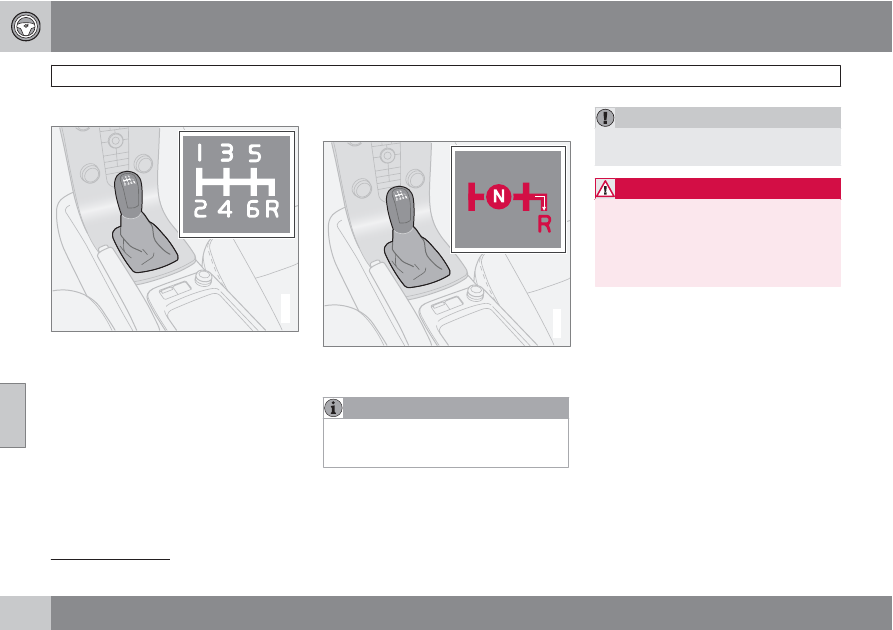Volvo C70 Convertible (2010 year). Manual - part 9

06 Starting and driving
Manual transmission, 6-speed*
06
146
*
Option/accessory, for more information, see Introduction.
6-speed manual transmission
G018258
•
Depress the clutch pedal completely when
changing gears
1
•
Remove your foot from the clutch pedal
while driving. The shift pattern should be
followed.
•
Overdrive (5th and 6th gears) should be
used as often as possible to help improve
fuel economy.
Engaging reverse gear, 6-speed
transmission
G018259
Reverse gear should only be engaged from a
complete stop.
NOTE
Reverse gear is electronically blocked to
help prevent it from being selected while the
vehicle is moving foward.
CAUTION
Never shift into reverse while moving for-
ward.
WARNING
An extra mat on the driver's floor can cause
the accelerator, brake, and/or clutch pedal
to catch. Check that the movement of these
pedals is not impeded. Not more than one
protective floor covering may be used at
one time.
1
Clutch interlock: The clutch must be fully depressed before you can start your car. If the clutch is notdepressed, it will not be possible to start the engine.